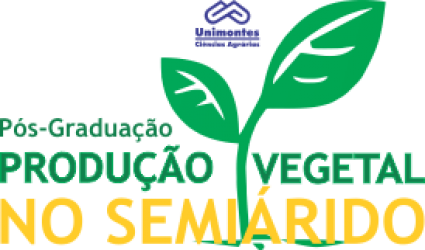- Version
- Download 10
- File Size 1.85 MB
- Create Date 10/06/2021
- Download
SANTOS, Rayane Carneiro dos. Desenvolvimento de frutos com sementes e alterações citológicas em frutos partenocárpicos de atemoia. 2018. 37 p. Tese (Doutorado em Produção Vegetal no Semiárido) – Universidade Estadual de Montes Claros, Janaúba, 2018.
O período do desenvolvimento dos frutos é marcado por alterações nas fases de divisão celular, expansão e aspectos citológicos. A aplicação exógena do GA3 em flores de atemoieira induz a partenocarpia e, associada à polinização artificial, aumenta o tamanho dos frutos. Objetivou-se caracterizar o desenvolvimento do fruto da atemoieira e estudar os mecanismos do seu crescimento e da partenocarpia induzidos pela aplicação do GA3. Avaliaram-se aspectos morfológicos, anatômicos, histoquímicos, ultraestruturais e fisiológicos durante o desenvolvimento dos frutos. Foram aplicados três tratamentos: (1) tratamento-controle com frutos produzidos por polinização artificial (PA); (2) frutos oriundos de PA seguida de aplicação de 250 ppm de GA3; e (3) frutos partenocárpicos induzidos pela aplicação de 1000 ppm GA3.O crescimento do fruto de atemoieira exibiu um padrão sigmoide, cujo desenvolvimento ocorreu em três fases: I) divisão celular, II) diferenciação celular e III) maturação. A divisão celular esteve restrita à fase I, com término aos 70 dias após a antese (DAA). O tamanho do fruto foi definido no final da fase II aos 105 DAA, e a expansão celular e o aumento da massa ocorreram até a colheita, aos 120 DAA. Os aspectos ultraestruturais revelam que a fase I apresentou células com grande volume nuclear e numerosa população de organelas; a fase II, redução do citoplasma e aumento do volume do vacúolo, e a fase III, aumento de plastídeos com compostos de reserva. O GA3 promove o crescimento dos frutos polinizados com estímulo à divisão e à expansão celular, associado à redução na produção de sementes, e induz a partenocarpia pela manutenção da divisão e expressivo estímulo à expansão celular. A ausência de sementes, promovida pela aplicação exclusiva de GA3, determinou o menor tamanho dos frutos partenocárpicos e a menor firmeza, relacionada ao afrouxamento da parede celular ocasionado pelo menor acúmulo de cálcio.
Palavras-chave: Annona squamosa L. x Annona cherimola Mill.; ácido giberélico; partenocarpia; frutos sem sementes
Seeded fruit development and cytological changes in parthenocarpic fruits of atemoya
The period of fruit development is marked by changes in the phases of cell division, expansion and cytological aspects. The exogenous application of GA3 in atemoya flowers induces parthenocarpy and, associated with artificial pollination, increases fruit size. The aim of this study was to characterize the development of the atemoya fruit and to contribute to the elucidation of its induction mechanisms and parthenocarpy. Morphological, anatomical, histochemical, ultrastructural and physiological aspects were evaluated during fruit development. Three treatments were applied: (1) control treatment with fruits produced by artificial pollination (AP); (2) fruits from AP followed by application of 250 ppm of GA3; and (3) parthenocarpic fruits induced by the application of 1000 ppm GA3.The growth of atemoya fruit showed a sigmoid pattern, whose development occurred in three phases: I) cell division, II) cell differentiation and III) maturation. Cell division was restricted to phase I, ending at 70 days post anthesis (DPA). Fruit size was defined at the end of phase II at 105 DPA and cell expansion and mass increase occurred until harvest at 120 DPA. The ultrastructural aspects reveal that phase I presented cells with large nuclear volume and a large population of organelles, phase II, reduction of the cytoplasm and increase of the volume of the vacuole and phase III, increase of plastids with reserve compounds. GA3 promotes the growth of pollinated fruits with a stimulus to cell division and expansion, associated with reduced seed production and induces parthenocarpy by maintaining the division and expressive stimulus to cell expansion. The absence of seeds, occasioned by the exclusive application of GA3, determined the smallest size of the parthenocarpic fruits and the lowest firmness, related to the loosening of the cellular wall caused by the lowest accumulation of calcium.
Keywords: Annona squamosa L. x Annona cherimola Mill.; gibberellic acid; parthenocarpy; seedless fruit

